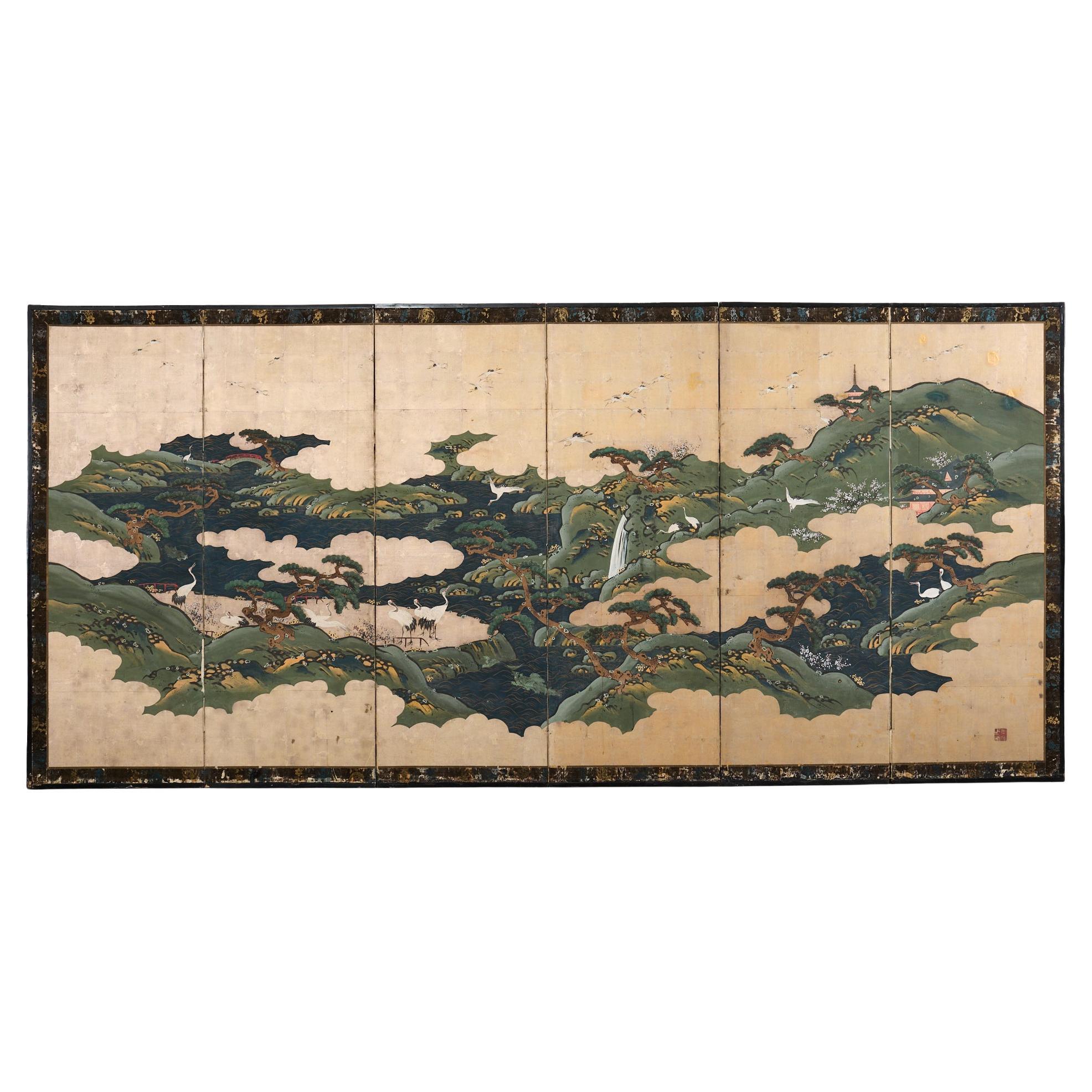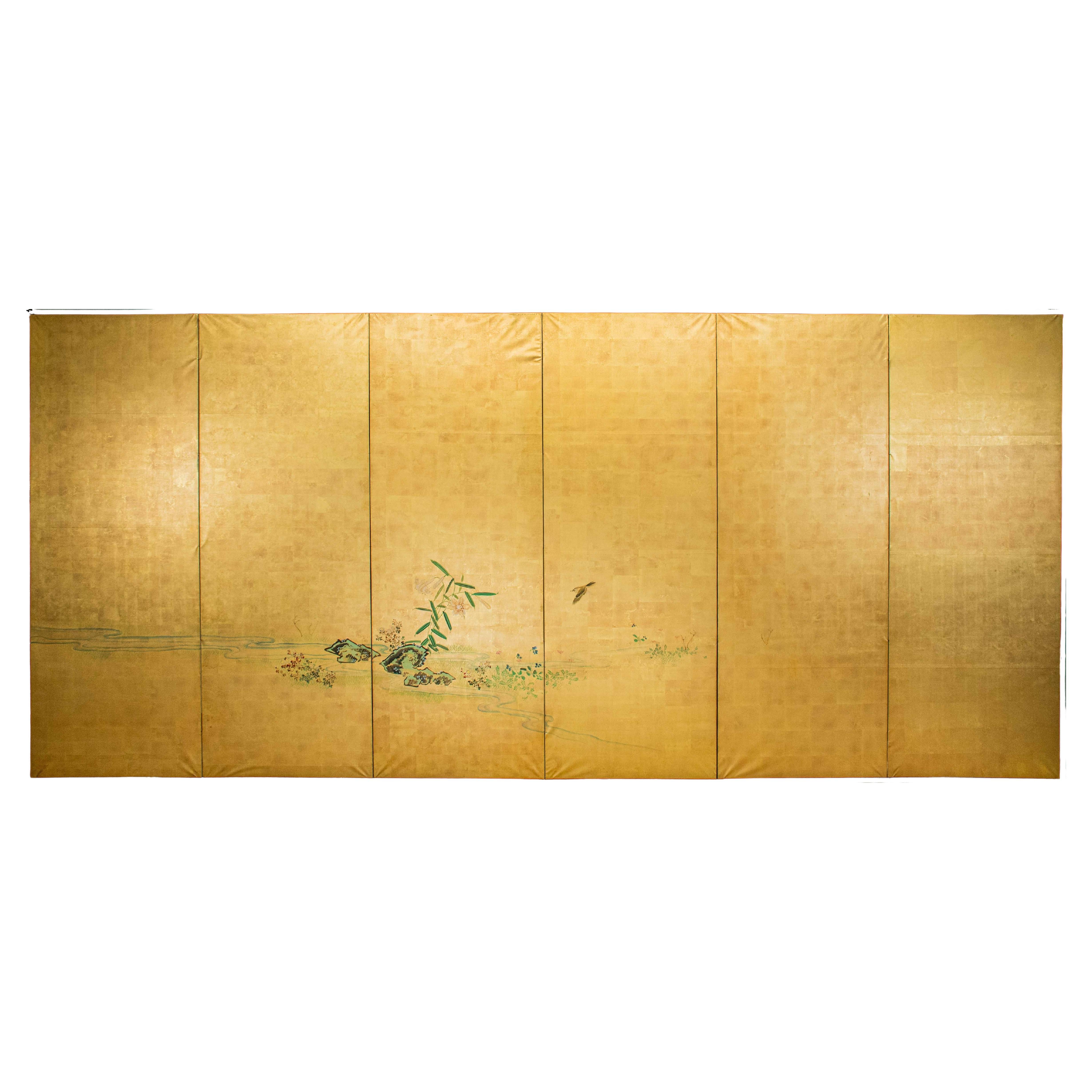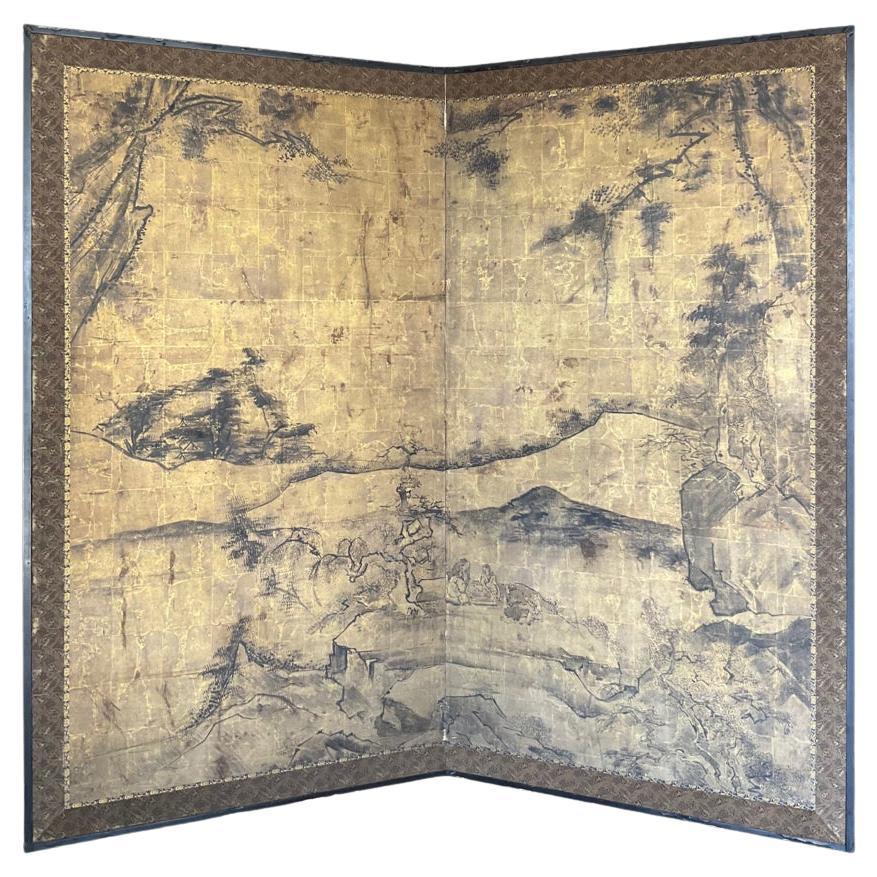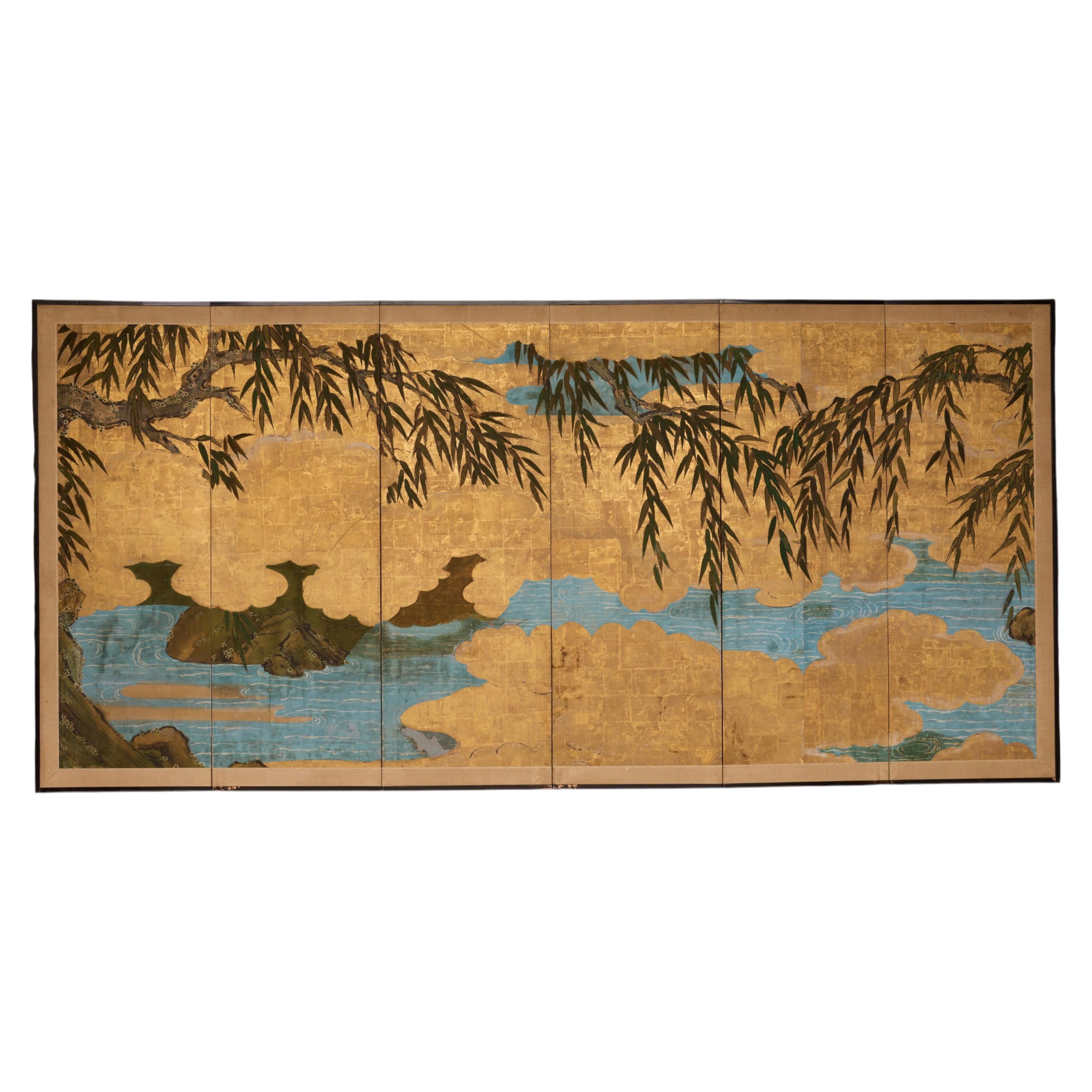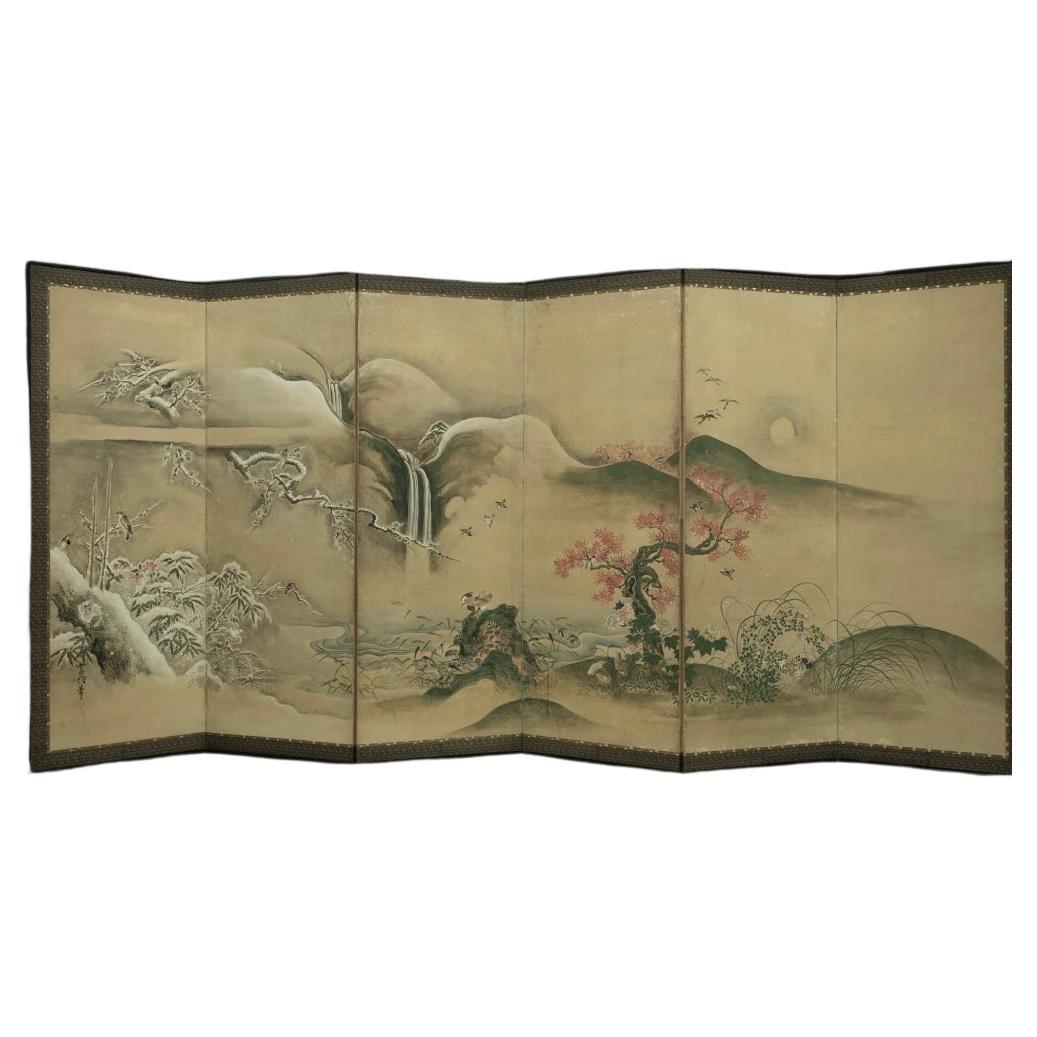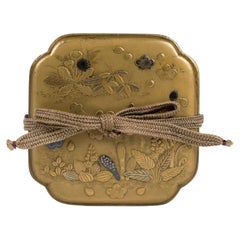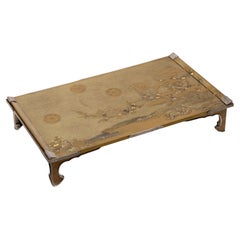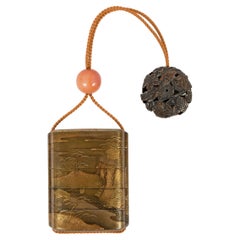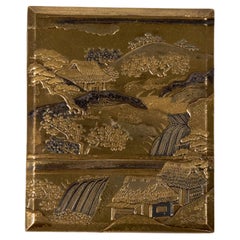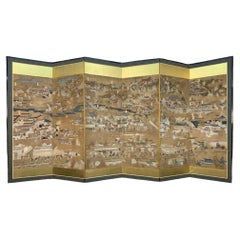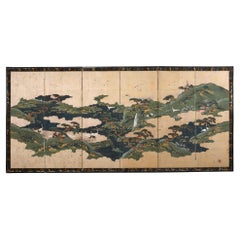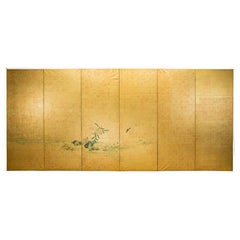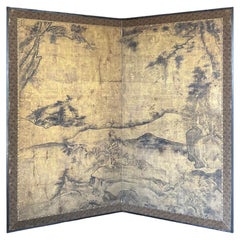Items Similar to Japanese Screen "the Song of Everlasting Sorrow"
Want more images or videos?
Request additional images or videos from the seller
1 of 10
Japanese Screen "the Song of Everlasting Sorrow"
$77,879.33
£57,976.10
€65,000
CA$106,675.22
A$118,646.13
CHF 61,953.32
MX$1,443,797.16
NOK 791,238.45
SEK 742,042.07
DKK 494,822.31
Shipping
Retrieving quote...The 1stDibs Promise:
Authenticity Guarantee,
Money-Back Guarantee,
24-Hour Cancellation
About the Item
Six-panels screen depicting the exit from the city of a Chinese emperor on horseback and his concubine in a luxurious palanquin.
It may be a scene illustrating the poem The Song of Everlasting Sorrow (Chang hen ge, ???) written by Bai Juyi (772-846), which recounts the tragic love story between the emperor Ming Huang (also known as Tang Xuanzong, 685-762) and his favorite concubine, the beautiful Yang Guifei (719-756). His excessive love led to intrigues at court and unrest in the empire. A rebellion in 755 forced the emperor to flee the capital. The uprising led by the general An Lushan (705-757) accused Yang Guifei of the emperor’s negligence and was executed the following year. The emperor abdicated shortly afterwards, setting the decline of the Tang dynasty.
This story became a popular theme for the Kanô school painters from the Momoyama period (1573-1615) to the early Edo period (1615-1868). This long-lasting popularity in Japanese visual and literary arts reflects a strong emotional identification with the love, death and longing themes, and the persistent idea of Tang Dynasty China as a cultural golden age. Moreover, the poem served as source of inspiration for the famous novel The Tale of Genji (c. 1010) written by Murasaki Shikibu (c. 973 – 1014/1025).
Signed Kanô Dôgen (????, 1643-1703). He was the second son of Kanô Sôsen (????). He founded an independent studio as an official omote eshi (external painter) of the shgunate in Asakusa Saryumachi, a district in current Tokyo. He also known as Ikinobu, Kuninobu or Kumenosuke.
He belonged to the Kanô school, one of the most famous Japanese schools of painting. This was stablished in the late Muromachi period, which means around the middle of the 15th century by Kanô Masanobu (????, 1434? - 1530?). This family artists workshop combined Muromachi period and Chinese-derived ink painting techniques with decorative and traditional Japanese elements. During the Edo period (1603-1868), they were the official painters of the Tokugawa shogunate. The subjects of literature and more broadly Chinese culture are very popular with the Kanô school.
The British Museum holds a hanging scroll by the artist: Kanô Dôgen, Hanging scroll. Bird and plum blossom, late 17th century, 38.5 x 12.4 in., inv. 1881,1210,0.768.
Kanô Dôgen (1643-1703)
Japan - Edo period (1603 - 1868) - second half of the 17th century
Height: 186 cm – six-panels – width 480 cm (total).
- Dimensions:Height: 186 in (472.44 cm)Width: 480 in (1,219.2 cm)Depth: 30 in (76.2 cm)
- Materials and Techniques:
- Place of Origin:
- Period:Late 17th Century
- Date of Manufacture:1603-1868
- Condition:Repaired.
- Seller Location:PARIS, FR
- Reference Number:Seller: 2015-2451stDibs: LU8311233542162
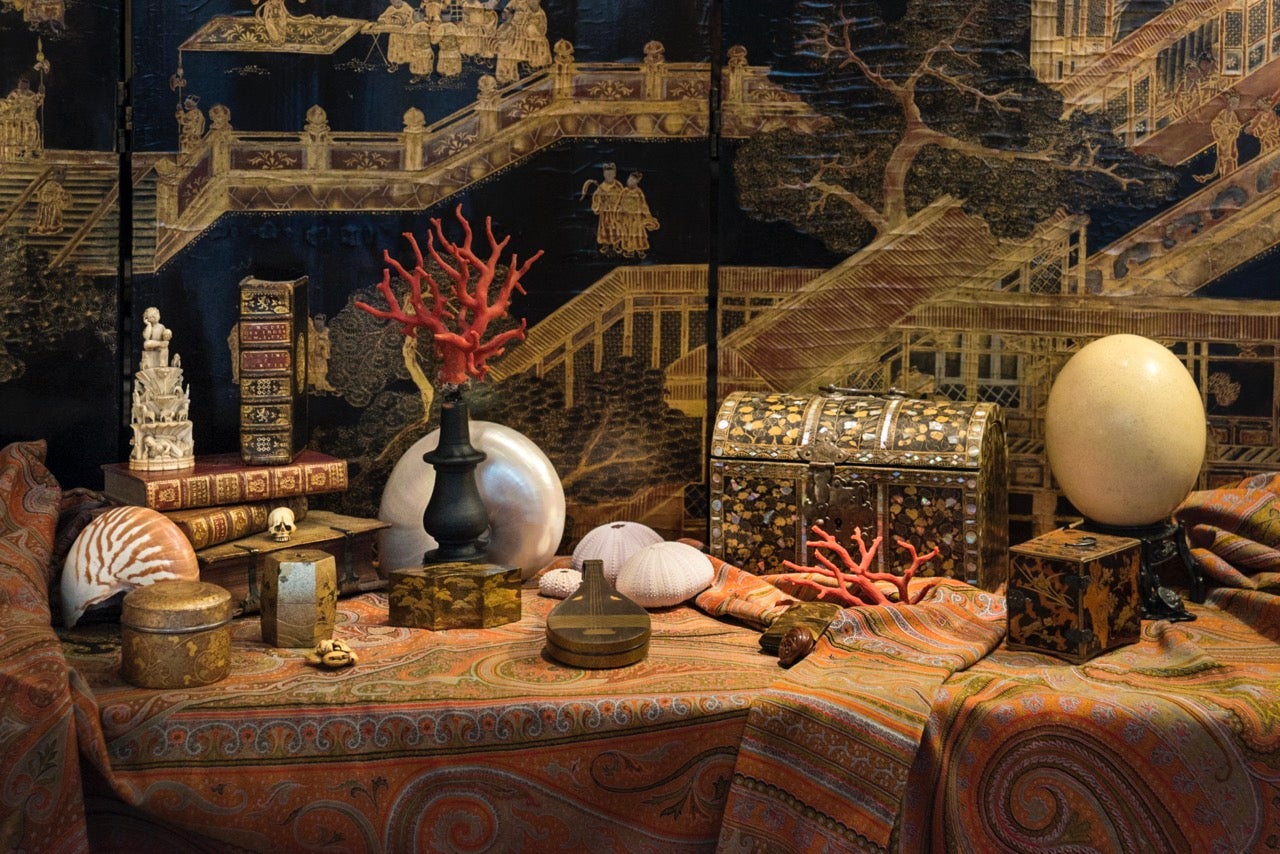
About the Seller
No Reviews Yet
Vetted Professional Seller
Every seller passes strict standards for authenticity and reliability
Established in 2013
1stDibs seller since 2023
Typical response time: Several days
- ShippingRetrieving quote...Shipping from: PARIS, France
- Return Policy
Authenticity Guarantee
In the unlikely event there’s an issue with an item’s authenticity, contact us within 1 year for a full refund. DetailsMoney-Back Guarantee
If your item is not as described, is damaged in transit, or does not arrive, contact us within 7 days for a full refund. Details24-Hour Cancellation
You have a 24-hour grace period in which to reconsider your purchase, with no questions asked.Vetted Professional Sellers
Our world-class sellers must adhere to strict standards for service and quality, maintaining the integrity of our listings.Price-Match Guarantee
If you find that a seller listed the same item for a lower price elsewhere, we’ll match it.Trusted Global Delivery
Our best-in-class carrier network provides specialized shipping options worldwide, including custom delivery.More From This Seller
View AllJapanese golden kobako flowers Edo period 18th century
Located in PARIS, FR
Quadrangular kobako box decorated with flowers in gold and blue lacquer with aogai inlay. Lid and sides in fundame lacquer, underside and interio...
Category
Antique 18th Century Japanese Japonisme Lacquer
Materials
Gold
Japanese Bundai or writting table in gold lacquer with a decor of lake landscape
Located in PARIS, FR
Rectangular bundai writing table on four legs in gold lacquer with black highlights on a nashi-ji background. The top is decorated with a lake landscape with plum trees, pine trees a...
Category
Antique Early 18th Century Japanese Edo Lacquer
Materials
Gold, Bronze
Japanese inro of the edo period adorned with a landscape houses near a lake
Located in PARIS, FR
Inrō with four gold lacquer compartments, decorated with a lake landscape. Accompanied by a bronze ryusa manju.
Small boxes formed of compartments that fit one on top of the other, i...
Category
Antique Late 18th Century Japanese Edo Lacquer
Materials
Gold
Japan lake landscape kobako box lacquer - Edo
Located in PARIS, FR
Rectangular kobako box in takamaki-e and kirigane gold lacquer circled with pewter depicting a lake landscape. Inside and back of the box in nashi-ji lacquer.
Japan – Edo period (16...
Category
Antique 18th Century Japanese Lacquer
Materials
Gold
Japanese Lacquered Tebako 'Box'
Located in PARIS, FR
Tebako box with three compartments in golden and nashi-ji lacquer, decorated with golden, red, and kirigane lacquer, golden persimmon tree leaves, among rocks. The compartments are of increasing size from the top. The decoration is in continuity.
Persimmon has been cultivated in southern China for more than 2500 years and is believed to have been introduced to Japan in the 8th century. The veneer is a tree with very hard wood, similar to ebony. According to a legend, one specimen survived the atomic bombing of Nagasaki on August 9, 1945, close to the epicenter. It is therefore in Japan a symbol of strength and longevity. It is also the national fruit of the country. It is eaten as a traditional dish during New Year's Day celebrations.
Tebako literally means "portable box...
Category
Antique 1860s Japanese Lacquer
Materials
Lacquer
Japanese Tebako in Nashiji lacquer adorned with golden Persimon flowers
Located in PARIS, FR
Tebako box with two compartments in golden and nashi-ji lacquer, decorated with golden, red, and kirigane lacquer, golden persimmon tree leaves, among rocks. The compartments are of ...
Category
Antique Early 19th Century Japanese Meiji Lacquer
Materials
Gold
You May Also Like
Edo Period Kyoto Screen (2/2)
Located in Fukuoka, JP
Edo Period Kyoto Screen
Period: Edo period
Size: 343 x 176 cm (134.6 x 69 inches)
SKU: RJ69/2
This stunning Edo period screen depicts typical scenes of...
Category
Antique 18th Century Japanese Edo Paintings and Screens
Materials
Silk, Wood, Paper
Japanese Edo Screen Kano School Isle of Immortals
Located in Rio Vista, CA
Fascinating 19th century Japanese Edo period six-panel byobu screen depicting the Isle of Immortals. The painting features white Manchurian cranes among pines and flowering plum cent...
Category
Antique 19th Century Japanese Edo Paintings and Screens
Materials
Brass, Gold Leaf
A japanese folding screen decorated with a naturalistic scene
Located in Milano, IT
Byōbu folding screen, 屏風, six panels with gold leaf background, decorated with a naturalistic scene of elegant simplicity, depicting flowers and a stream.
The composition depicts a s...
Category
Antique Late 19th Century Japanese Paintings and Screens
Materials
Paper
$5,271 Sale Price
20% Off
Early Edo Period Chinese-Inspired Screen
Located in Fukuoka, JP
This remarkable screen from the early Edo period, circa the 17th century, showcases the influence of early Chinese art forms with its intricate ink work on a gold leafed surface. The...
Category
Antique 17th Century Japanese Edo Paintings and Screens
Materials
Gold Leaf
Japanese antique screen - EDO period - Willow over a stream
Located in Prahran, Victoria
Antique Japanese 6 panel screen from the early Edo period (C1650). One of a pair (both available). This magnificent golden screen shows...
Category
Antique 1650s Japanese Edo Paintings and Screens
Materials
Gold Leaf
Edo Period Nature Screen by Kanō Tsunenobu (2/2)
Located in Fukuoka, JP
Embark on a journey through the tranquil beauty of a Japanese screen from the Edo period, crafted by the illustrious Kanō Tsunenobu, a master of the Kanō school and nephew to Kanō Ta...
Category
Antique 18th Century Japanese Edo Paintings and Screens
Materials
Paper
More Ways To Browse
Hanging Scrolls
Emperor Japan
Chinese Song Dynasty
Song Dynasty Furniture
Japanese Six Screen
Chinese Japanese Screens
Japanese Silk Painting Ink
Chinese Silk Screen
Antique Chinese Painting Of Birds
Painted Panel Screen Birds
Japanese Antique Wood Birds
Chinese Screen With Birds
Scroll Japanese Birds
Kano School
Chinese Silk Scroll
Bird Paintings On Silk
Chinese Ink On Silk
Ming Dynasty Painting

